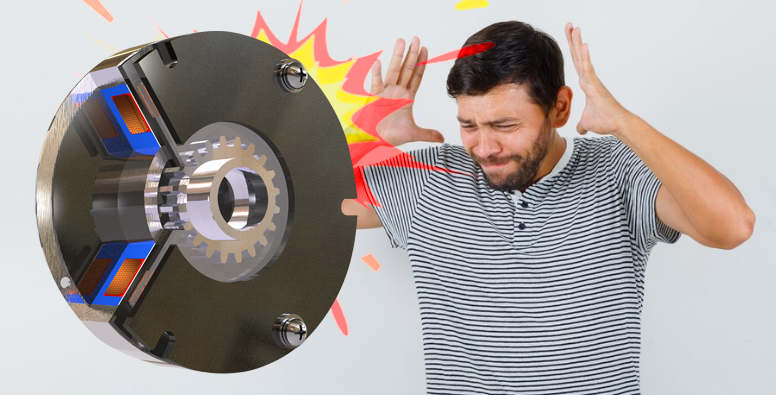Welcome Friend!

SCREEEECH - 10 Things to Look for if Your Brakes are Squeaking
Spring applied brakes can be used for holding, but some for stopping as well.
Power-off spring applied brakes are used in a wide variety of applications. They are two basic purposes: Stopping and holding. Some brakes are built for stopping and holding, while others are just built for holding. The key difference is that they use different friction materials. The materials used in a holding brake offer high static torque because of the aggressive friction material. On the other hand, brakes built for dynamic stopping have a less aggressive coefficient of friction but have better wear properties and can dissipate heat better.
If a holding brake is used improperly for dynamic braking applications. It could result in problems such as noise, wear, overheating, and premature failure - the inability to release when electrical current is applied. During normal operation, the brakes should not squeak. The only noticeable sound from the brake should be when the brake disengages when power is applied, This is because the steel armature plate makes quick contact with the steel coil body.
If the spring applied brake is used for dynamic stopping, you should expect to notice some stopping noise when the surfaces rub to generate the dynamic torque. A grinding sound is more common than a squeak. Let us look at what might be causing a squeak.
| 1 | Is the brake mounted vertical or horizontal? Sometimes vertical applications get some unintentional rubbing of the floating friction disc due to gravity. We would not expect a loud squeak though unless it is extreme contact. |
| 2 | Sometimes when the hub and friction disc are misaligned, the disc is not able to float as it is supposed to. If the noise becomes continuous, it is possible that disc became misaligned and never returned to its proper position... and then continued to rub. |
| 3 | We should not take anything for granted, since sometimes the brake is not what is making the noise. If the brake is rubbing, then we would expect some dust to be generated from the rubbing. Brakes used for holding-only should not expect to see any wear, growth in airgap, or evidence of brake dust. |
| 4 | Is power maintained to the brake to keep the brake disengaged? Verify proper power is getting to the brake. A brake should operate within +/- 10% of its nominal coil voltage if still within its designed life. Make sure to check the voltage at the end of the brake leadwires. If PWM is used, make sure that the brake is still getting enough power to keep disengaged. Every machine is different. Vibration makes a difference. |
| 5 | Check the concentricity and run out on the mounting surface and pilot diameter, and shaft tolerance again. Each brake model and size have their own mounting requirements. |
| 6 | Is the friction disc free-floating when the brake is powered on, and the hub is fixed in place? It should be. |
| 7 | Is the brake near a heat source or otherwise getting too hot? High cycling applications can cause heat build-up, especially for brakes used dynamically. This would be especially interesting if the problem does not occur upon initial assembly and run-in. |
| 8 | Is the frame that the brake is mounted to rigid enough? It is bending or flexing? This has been known to cause unintentional rubbing if the frame is not rigid enough. |
| 9 | Have the mounting bolts loosening up due to vibration, or is the shaft bent? This can cause unintentional misalignment and rubbing / noise. |
10 | Is an improper brake friction material specified for the application? Reputable brake manufacturers may have a wide assortment of friction materials available for modern applications. Many brakes are customized to perform for the specific application. There are applications like medical or theater equipment that require quiet brakes, and the noise qualities are based on the brakes' internal design and materials. |
Benefits of Ogura power off brakes:
- Long life
- Quality
- Safety
- Reliability
- Customization and optimization
- Low total cost
